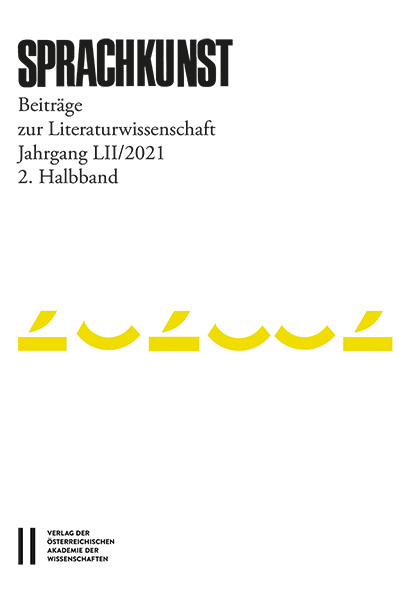
Sprachkunst Jahrgang LII/2021, 2. Halbband, pp. 167-192, 2022/05/23
Beiträge zur Literaturwissenschaft
Jahrgang LII/2021, 2. Halbband

This article examines the structures of the finale in Johann Nestroy’s plays as well as in Hugovon Hofmannsthal’s ›Rosenkavalier‹ within the context of the historical poetics of comedy.It reveals that these finales are by no means as simple or straightforward as the tradition ofcomedic happy endings might suggest. On the contrary – against the backdrop of a more generalcrisis of drama, an expansion of the ending in multiple respects is notable and reflects thecomplexity of finalizing procedures in modernity. Rather than providing a definite resolutionof the staged conflicts, the ending – as analysed here – bundles them “all together”, and in sodoing orchestrates their broad scenic display.